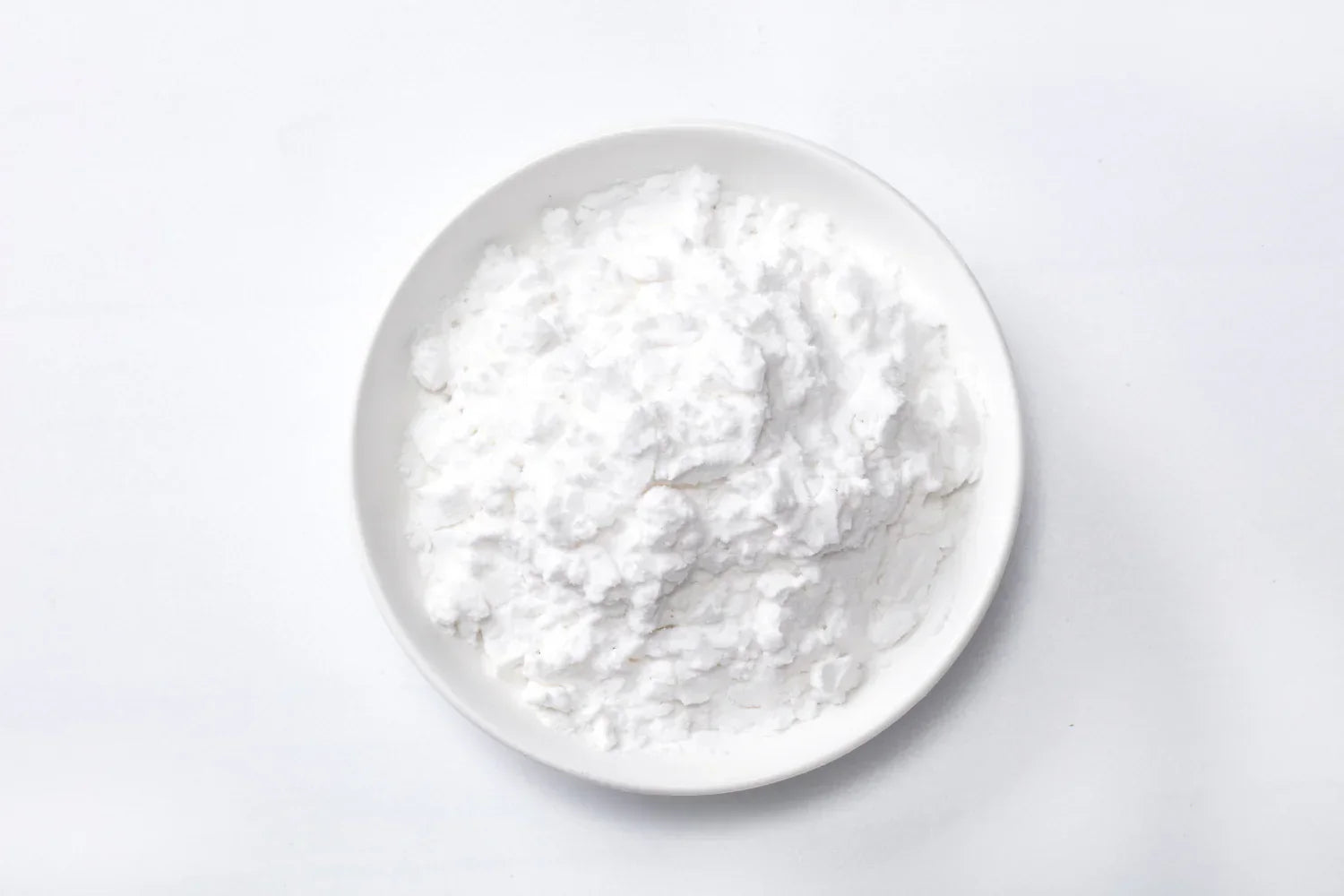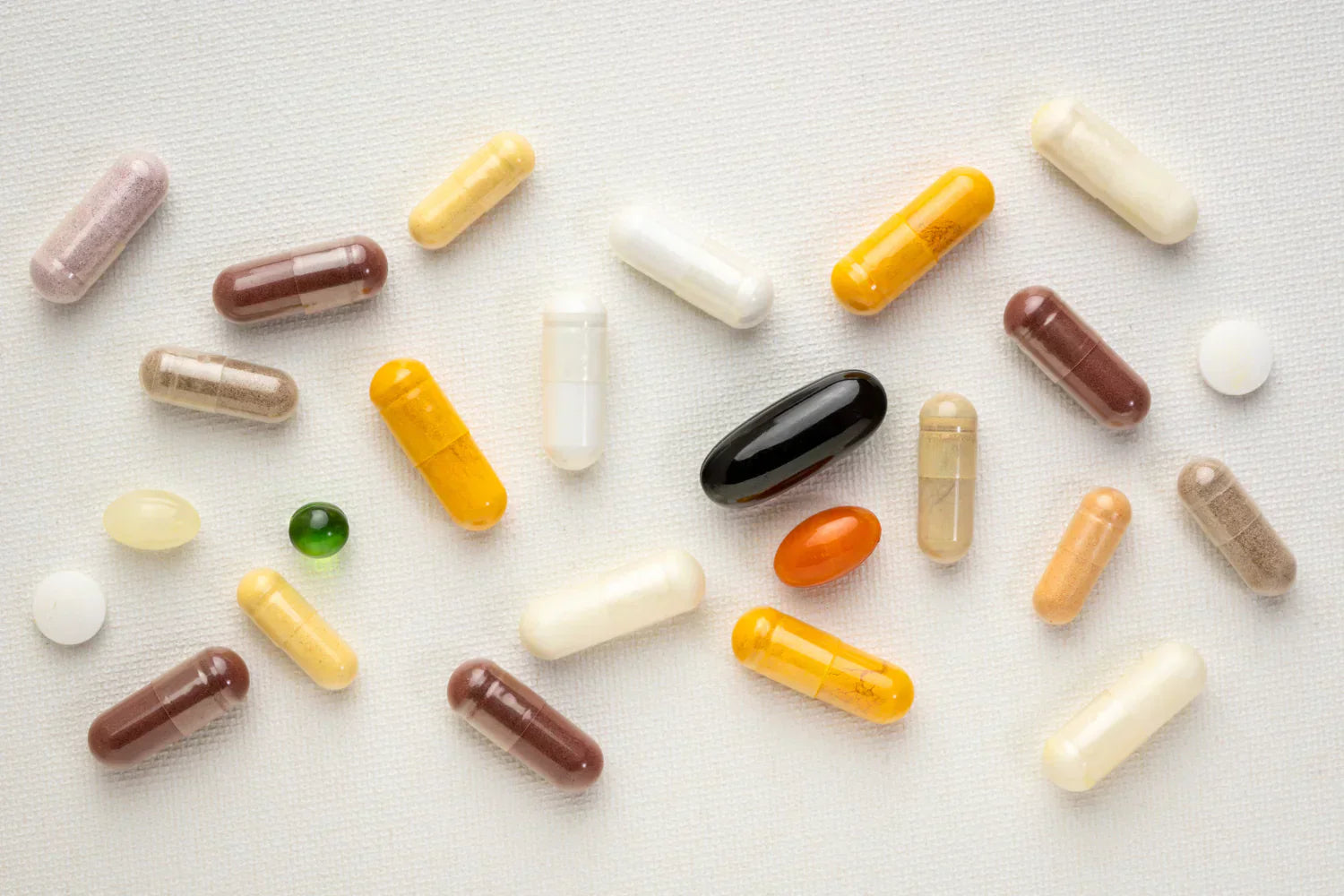Gummies taste great, they’re enjoyable to eat, and they’re effective for delivering supplements and other active ingredients. Your choice of sweetener in gummies can make a big difference in taste, texture, and health impact, with tapioca syrup rising in popularity due to its improved mouth-feel, sustainability, and lack of fructose. In this guide, learn the differences between tapioca syrup and corn syrup gummies, and find out which sweetener is preferable.
What Is Tapioca Syrup?
Tapioca syrup is extracted from cassava root. Native to South America, cassava is high in starch. Cassava starch can be broken down to make sugary tapioca syrup, an increasingly common sweetener in foods and supplements.
How It's Made
Tapioca syrup is derived from cassava root by removing the starch from the root, which is combined with water to make a slurry. Manufacturers then use special enzymes to break down the starch slurry into simple sugars, mainly glucose, which results in a thick, sweet syrup.
Sweetness & Flavor Profile
In contrast to other sweeteners that often taste overwhelmingly sugary, the milder sweetness of tapioca syrup helps bring out fruity flavors in gummies and other products. This makes tapioca syrup more versatile than high-fructose corn syrup (HFCS), which has a very strong taste that commonly drowns out additional flavors.
Nutrition & Glycemic Impact
In terms of glycemic index (GI), there isn’t much of a difference between tapioca syrup and other sweeteners. It has a relatively high GI and causes a spike in blood sugar when ingested. However, tapioca syrup is entirely free of fructose, which is broken down in the liver and may contribute to the health risks of HFCS and other fructose-rich sweeteners.
Shelf Life
The high sugar content of tapioca syrup contributes favorably to its shelf life, with gummies containing this sweetener generally lasting 12-18 months when stored properly. This shelf stability is comparable to that of HFCS, making tapioca syrup perfectly viable for gummy production.
Consumer Perception
Consumers generally view tapioca syrup much more favorably compared to HFCS. While tapioca syrup production methods vary, it’s considered to be a “natural” sweetener since it is non-GMO and plant-based. Some consumers may be aware of tapioca syrup’s relatively high glycemic index, but its glycemic impact is no higher than HFCS or other alternatives.
Side Effects
Like other sweeteners, consuming high concentrations of tapioca syrup can lead to blood sugar spikes. Tapioca syrup can also cause digestive discomfort, and while rare, some individuals are allergic to cassava overall. For the most part, though, tapioca syrup does not cause any side effects whatsoever.
What Is High Fructose Corn Syrup?
Usually derived from genetically modified (GMO) corn, high-fructose corn syrup contains large concentrations of fructose. As one of the world’s most common sweeteners, HFCS has come under increasing scrutiny in recent years due to its health impact, with many consumers believing it contributes to obesity, diabetes, and other diseases. Today, HFCS is most commonly included in low-cost products like processed food and soft drinks.
How It's Made
HFCS is derived from corn starch, which is exposed to special enzymes that break it down into glucose. This glucose syrup is then combined with other enzymes that convert approximately 50% of the glucose into fructose, an extremely sweet substance that has a negative impact on the liver. HFCS production is highly industrialized, relying on GMO corn to reduce costs.
Sweetness & Flavor Profile
HFCS is incredibly sweet, drowning out other flavors and providing an addictive sugar rush. Generally considered to be about twice as sweet as glucose, fructose is sweeter than practically any other sweetening ingredient, making it possible to include lower concentrations of fructose in gummies, fruit juice, and other products while still providing intense sweetness.
Nutrition & Glycemic Impact
While HFCS has a similar glycemic impact to tapioca syrup, fructose is primarily processed in the liver, which can lead to accumulation of fat in this vital processing organ. The higher the concentration of fructose in HFCS, the lower the glycemic index, but the greater the strain on the liver. All sweeteners can cause obesity or worsen metabolic conditions, but HFCS carries the added risk of causing non-alcoholic fatty liver disease (NAFLD).
Shelf Life
HFCS has about the same shelf life as other sweeteners. Gummies containing HFCS last around 12-18 months on the shelf.
Consumer Perception
HFCS has gained a considerably negative reputation among consumers. Over the last 20 years, concerns over the effects of fructose on the liver and GMO skepticism have led consumers to believe that HFCS is a dangerous ingredient to be avoided. Some consumers even believe HFCS to be a “waste product” that only exists to provide an additional use for corn, supporting corn subsidies in the United States.
Side Effects
While all sweeteners can contribute to obesity, metabolic syndrome, and insulin resistance, the considerable concentrations of fructose in HFCS make it much more likely to cause liver damage than other sweetening ingredients. Some individuals may also suffer from a rare corn allergy that causes an allergic reaction to HFCS.
Differences Between Tapioca Syrup and Corn Syrup
Taste and Texture
HFCS is very sweet and highly sticky, while the sweetness of tapioca syrup is milder and it’s generally not quite as viscous. While HFCS has a potent flavor that often mutes other tastes, tapioca syrup synergizes effectively with fruit and other flavors.
Health Considerations
Both HFCS and tapioca syrup have relatively high glycemic impact, but HFCS is alone in containing high concentrations of fructose, which tapioca syrup doesn’t include at all. While providing cost savings due to its intense sweetness, fructose is known to cause liver complications.
Cost and Availability
Largely due to subsidies provided by the US taxpayer, GMO-derived HFCS is generally less expensive than tapioca syrup. However, this reduced price comes with costs of its own; mainly to the health of consumers. Trend-setting manufacturers have now made tapioca syrup just as available as HFCS, eliminating any gap between the two sweeteners.
GMO Status and Sustainability
Overall, tapioca is considerably more sustainable than HFCS. Cassava is much less likely than corn to be GMO or produced through mono-cropping. It’s also possible to grow cassava in poor soil while corn requires rich soil, from which it strips nutrients, leaving land bare for generations.
Is Tapioca Syrup or Corn Syrup Better for Gummies?
Tapioca syrup is generally a preferable alternative to corn syrup in gummies (even traditional corn syrup) for a variety of reasons:
- Tapioca syrup isn’t as overwhelmingly sweet, making it blend better with flavorings
- Tapioca syrup is more sustainable, being non-GMO and favorable to unconventional farming
- Tapioca syrup is safer since it doesn’t contain fructose
- Consumers find the mouth-feel of tapioca syrup to be preferable
Since HFCS and tapioca syrup have roughly the same glycemic impact and are highly comparable in many other ways, the advantages listed above put tapioca syrup at the head of the race as a gummy sweetener.
Tapioca Syrup vs. High Fructose Corn Syrup in Gummies
Texture
Most consumers find the texture of tapioca syrup gummies to be preferable since they’re softer and easier to chew. Pairing perfectly with pectin, tapioca syrup gummies are often described as having a “melt-in-your-mouth” texture even though they’re not so insubstantial as to not require any chewing.
Chewiness
Especially as they age, HFCS gummies can become hard and difficult to chew. Tapioca syrup gummies, however, retain their softer and easier-to-chew texture all throughout their shelf life.
Shelf Life
In gummies, HFCS and tapioca syrup offer roughly the same shelf life, highlighting the overall advantages of tapioca as a sweetening ingredient.
Is Tapioca Syrup as Bad as High Fructose Corn Syrup?
No, tapioca syrup is certainly not as bad as high-fructose corn syrup when it comes to sweetening ingredients. While it’s common for both consumers and vitamin manufacturers to over-hype the relative benefits of tapioca syrup compared to HFCS, it’s a fact that this sweetener is:
- Non-GMO
- Usually sustainably produced
- Liver-healthy
- & better-tasting
The dangers of HFCS might be slightly exaggerated, but the fact remains that it’s an inferior sweetening ingredient. Tapioca syrup presents an excellent alternative that consumers prefer because it’s healthier for them.
Frequently Asked Questions
Is tapioca syrup healthier than corn syrup?
Yes, tapioca syrup is generally healthier than corn syrup. The sweeteners have similar glycemic indexes, but fructose can cause liver damage, and tapioca syrup doesn’t contain any fructose. It’s also more common for cassava root to be grown sustainably compared to corn.
Is tapioca syrup healthier than sugar?
Yes, tapioca syrup is usually healthier than sugar. Traditional sweeteners like sugar (usually labeled “table sugar” or “refined sugar”) are often genetically modified and produced with mono-cropping involving pesticides like glyphosate. The two sweeteners have similar glycemic impact, but tapioca syrup is preferable to regular sugar due its lack of fructose and sustainable status. Tapioca syrup is also generally healthier than other traditional sweeteners.
Does tapioca syrup count as added sugar?
Yes, tapioca syrup is usually labeled as “added sugar” since it’s a processed sweetener. However, many consumers find the subtle sweetness of tapioca syrup to be preferable to other sweeteners commonly labeled as “added sugar” within the food industry, which often have an overwhelmingly sweet taste.
Is corn syrup good or bad for you?
There’s a difference between traditional corn syrup and high-fructose corn syrup, but both types are bad for you when compared to other sweeteners. With high glycemic indexes that make it hard to maintain stable blood sugar levels, corn syrup poses the added risk of containing fructose, which can cause liver damage.
Is corn syrup 100% glucose?
Conventional corn syrup contains more glucose than high-fructose corn syrup, but both sweeteners contain fructose, an extremely sweet substance that can cause liver damage. Normally, corn syrup contains less than 10% fructose, but high-fructose corn syrup can contain as much as 55%.
Is corn syrup worse than sugar?
Yes, corn syrup is generally worse than sugar due to the production process used and the presence of fructose in corn. Both sweeteners have similar glycemic impact, but corn syrup is more likely than sugar to be GMO and derived from crops exposed to glyphosate.
Is corn syrup natural?
Corn syrup is technically a natural product since it is derived from corn, a plant. However, high-fructose corn syrup is commonly derived from GMO corn, and it’s subjected to extensive enzymatic processes that change its chemical structure.
What is a substitute for corn syrup in gummies?
Tapioca syrup is an excellent substitute for corn syrup in gummies and other forms of food manufacturing. It’s a versatile sweetener that’s more sustainable than corn syrup while also posing fewer health risks. The nutritional value of the two sweeteners is about the same, and tapioca syrup doesn’t have a lower glycemic index than corn syrup. However, tapioca is the more-natural alternative, and it’s what consumers prefer.
Is organic tapioca syrup good for you?
While all sweeteners pose health risks when consumed in high quantities, tapioca syrup is certainly not as bad for you as high-fructose corn syrup and other common sweeteners. It’s more sustainable and less likely to be GMO, and it consists entirely of glucose and doesn’t contain any fructose whatsoever.
What's the difference between high-fructose corn syrup and corn syrup?
High-fructose corn syrup consists of corn syrup that has been subjected to enzymatic processes that convert up to 55% of the glucose it contains into fructose, an extremely sweet substance that is damaging to the liver.
Conclusion: Should You Use Tapioca or Corn Syrup for Gummies?
Tapioca syrup is clearly preferable to corn syrup. It’s likely that corn syrup wouldn’t even exist as an option without subsidies secured by the American corn lobby, and it’s a mono-cropped product that causes liver damage.
Every high-quality gummy manufacturer has recognized this fact by switching to tapioca syrup. It’s what consumers prefer, it poses fewer health risks, and it’s more sustainable. Contact TrustWorks today to learn more about the benefits of tapioca syrup and how it can make your gummies soar.



